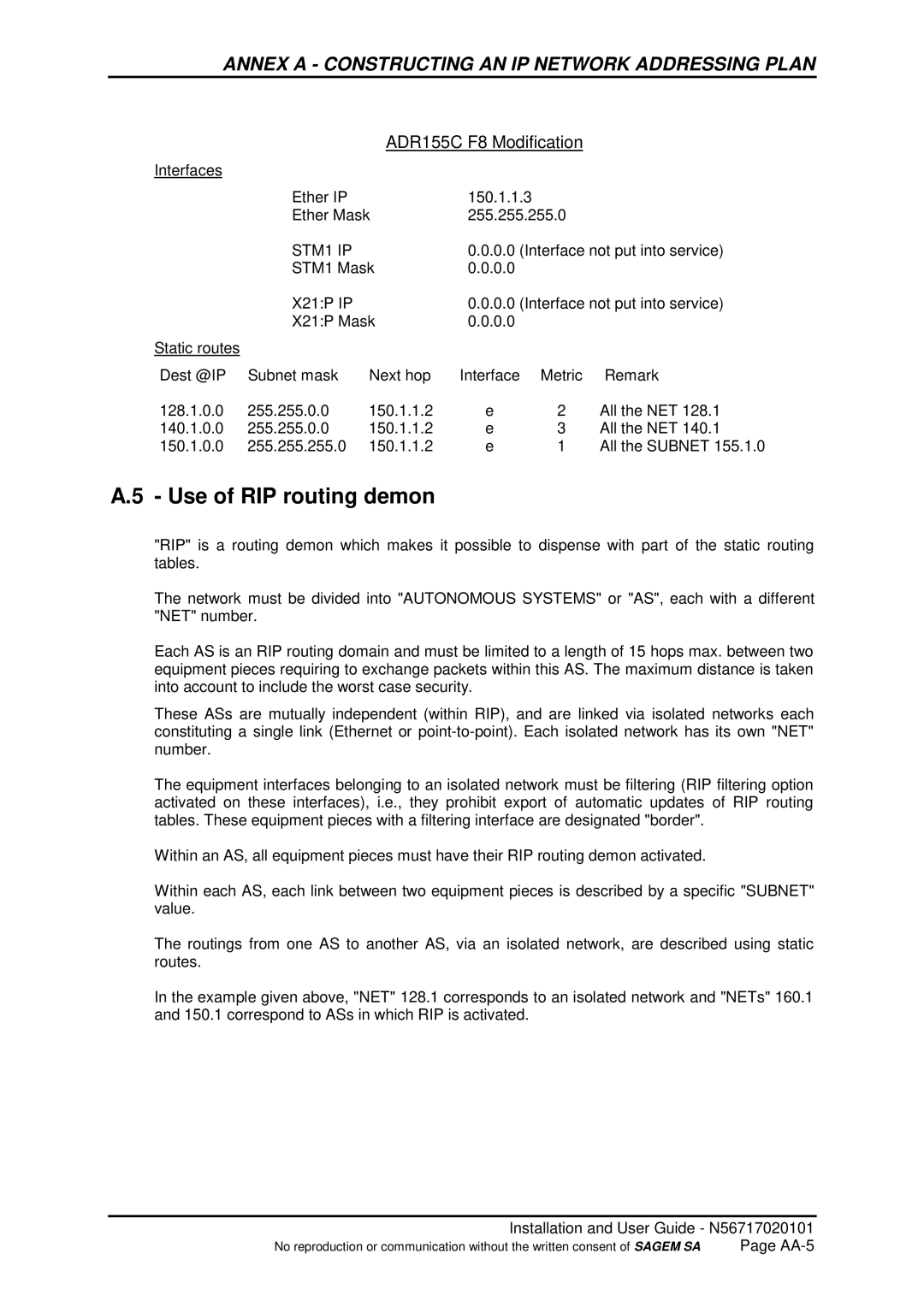
ANNEX A - CONSTRUCTING AN IP NETWORK ADDRESSING PLAN
|
| ADR155C F8 Modification |
| ||
Interfaces |
|
|
|
|
|
| Ether IP |
| 150.1.1.3 |
|
|
| Ether Mask | 255.255.255.0 |
| ||
| STM1 IP |
| 0.0.0.0 (Interface not put into service) | ||
| STM1 Mask | 0.0.0.0 |
|
| |
| X21:P IP |
| 0.0.0.0 (Interface not put into service) | ||
| X21:P Mask | 0.0.0.0 |
|
| |
Static routes |
|
|
|
|
|
Dest @IP | Subnet mask | Next hop | Interface | Metric | Remark |
128.1.0.0 | 255.255.0.0 | 150.1.1.2 | e | 2 | All the NET 128.1 |
140.1.0.0 | 255.255.0.0 | 150.1.1.2 | e | 3 | All the NET 140.1 |
150.1.0.0 | 255.255.255.0 | 150.1.1.2 | e | 1 | All the SUBNET 155.1.0 |
A.5 - Use of RIP routing demon
"RIP" is a routing demon which makes it possible to dispense with part of the static routing tables.
The network must be divided into "AUTONOMOUS SYSTEMS" or "AS", each with a different "NET" number.
Each AS is an RIP routing domain and must be limited to a length of 15 hops max. between two equipment pieces requiring to exchange packets within this AS. The maximum distance is taken into account to include the worst case security.
These ASs are mutually independent (within RIP), and are linked via isolated networks each constituting a single link (Ethernet or
The equipment interfaces belonging to an isolated network must be filtering (RIP filtering option activated on these interfaces), i.e., they prohibit export of automatic updates of RIP routing tables. These equipment pieces with a filtering interface are designated "border".
Within an AS, all equipment pieces must have their RIP routing demon activated.
Within each AS, each link between two equipment pieces is described by a specific "SUBNET" value.
The routings from one AS to another AS, via an isolated network, are described using static routes.
In the example given above, "NET" 128.1 corresponds to an isolated network and "NETs" 160.1 and 150.1 correspond to ASs in which RIP is activated.
Installation and User Guide - N56717020101
No reproduction or communication without the written consent of SAGEM SA | Page |
